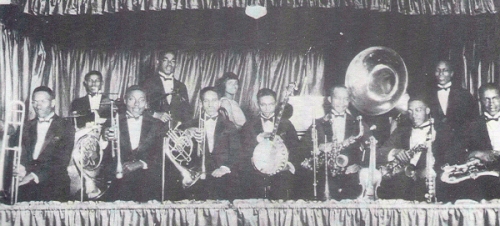George Morrison dreamed of playing violin with a major orchestra. As things stood for black musicians in the early twentieth century, that dream would remain unrealized. Born in Fayette, Missouri, on September 9, 1891, Morrison came from a musical family and at an early age made a violin from a corn stalk, a piece of wood, and some string. In 1900, the family moved to Boulder, Colorado. Morrison first played publicly with his brother in mining camps in the mountains west of Boulder. He saved his money and studied violin with two well-known Denver violinists, David Abramowitz and Horace Tureman.
Prior to his marriage in 1911 Morrison worked in Denver’s parlor houses. After he married he worked as an elevator operator and started “George Morrison and his Jazz Orchestra,” one of Denver’s first jazz orchestras. His desire to play classical violin persisted, however, and the family moved to Chicago where he studied at the Colombia Conservatory of Music.
On his return from Chicago, Morrison formed the 11-piece band that caught the attention of the recording industry in 1920. Columbia Records invited Morrison’s group to New York where they recorded under the name “Morrison’s Singing Jazz Orchestra.” In New York, the Victor Phonograph Company invited them for a tone test. Columbia Records hastened to inform Morrison that his contract with them was exclusive. Morrison recommended that Victor contact Paul Whiteman, a white Denver band leader who had rejected his classical training for jazz. Whiteman’s career is now legend. Columbia records did not renew Morrison’s contract and the band returned to Denver having gained little from their New York hiatus, though they played a 1920 command performance in London for King George and Queen Mary.
In Denver Morrison signed with the Pantages Circuit, a booking agency that took the group to major cities throughout the West. In 1924, Hattie McDaniel joined the band, but its status as a club’s featured entertainment did not exclude it from being required to enter through the back door. Despite never having achieved his dream of playing with a symphony orchestra before his death in 1974, every musician who knew or worked with Morrison acknowledged his abilities. He had played a major role in the careers of many black musicians, founded the black Musicians Local 623, and brought hours of pleasure to thousands of Coloradans.

